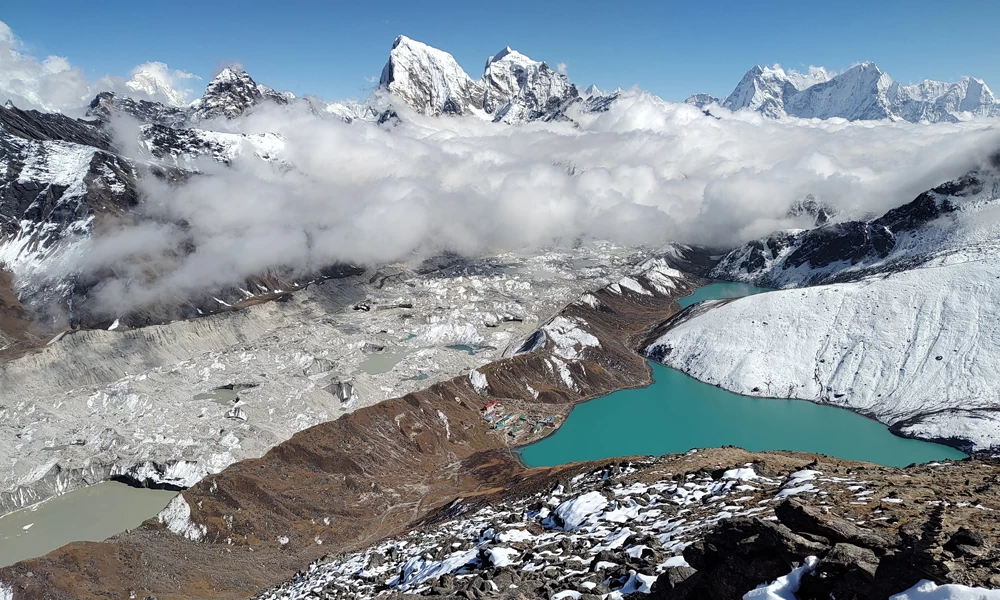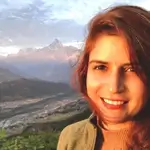Meals and accommodation during the Everest View Trek
Meals
During the trek, meals must be taken from the teahouses and lodges, which serve meals from all the classes and yummy foods for everyone's taste and preferences. Depending on the number of hearts you are willing to spend, breakfast meals consist of porridge, toasted bread or eggs, and the famous Tibetan bread. The trekkers can enjoy traditional Nepali cuisine for lunch and dinner, ranging from the famous Dal Bhat, which consists of lentils, rice, vegetables, and pickles. Other favorites include noodles, pasta, vegetable curry, and soup dishes. You will also get local delicacies such as momo (steamed Himalayan bun) and other minor meals like spring rolls to take after a day of trekking.
Popular appetites are coffee, hot tea, and hot chocolate, which are served hot to warm the body after long walks in the mountains at most of the teahouses. The food menu might also reduce as one climbs up the rocky terrains of Rwanda, but the food is healthy and enough to keep one going throughout the trek.
Accommodation
Camping during the Everest View Trek is a mode of staying in traditional teahouses and lodges that offer the trekkers a proper rest. Down in the base, there are standard lodges with comfortable chairs, desks, and beds, mainly twins with thick blankets. You may find more austere lodges during your climb, but they still offer the necessities you need.
It is worth mentioning that most of the time, you will find that the lodges provide shower or bath setups with common washrooms featuring either Western sitting WCs or Asian squatting WCs. Lodges have fireplaces in the dining hall where firewood is burned to provide warmth for cooking and preparing a meal while people share their experiences with fellow hill climbers. Sherpas are very friendly and welcoming, so they will do their best to ensure you are having a good time after meeting them.
It is worth staying at these teahouses because most are individually owned and belong to the Sherpa community. This concept of getting to dine and rest in such a true cultural experience forms an integral part of the trip, making the Everest View Trek not only an exhausting hike but also a cultural exercise.
Everest View Trek difficulty level
The Everest View Trek is a moderate trek; therefore, this trek is suitable for tourists who have not been trekking before or have less experience on high-altitude treks. It is a gradual climb; the length of walk per day varies from 4 to 7 hours, which is enough to get used to the altitude. While trekking during this period, the highest point we attain is 3,880m (12,730 feet) at E VH. However, This height is not high if properly paced for trekking and if enough acclimatization days are taken, particularly at Namche Bazaar. The well-established tracks and the available tea houses help to make the trek more comfortable rather than facing high hills problems of treks.
Nevertheless, as with any type of trekking at high altitudes, some obstacles are characteristic of any level. This suggests that the air up there is less dense, and, therefore, anybody who climbs higher than his/her physical condition allows may suffer from altitude sickness even though they are in better health than immobile persons on the plains. This is important so that trekkers will drink enough water, move at a moderate speed, and heed any soreness or pain they may feel. The weather may also prove a little unpredictable, with thinner air requiring some extra clothing, particularly in the early morning and evening for those visiting higher regions. The trek is doable for participants who are moderately fit, but it is recommended that trekking participants get into some exercise before the trek, particularly cardiovascular training. All in all, Everest View Trek is one of the most satisfying treks with a reasonable level of strenuousness, which helps people get their first taste of the Himalayas.
Preparation required for the Everest View Trek
- Physical Fitness: Do aerobic exercise and weight training exercises, and endurance activities such as hiking or brisk walking on different type of terrains to increase stamina.
- Acclimatization Knowledge: Know about acclimatization and avoid climbing at higher altitudes within the first day – two days in Namche Bazaar.
- Gear and Equipment: Purchase a strong pair of trekking shoes, thick woolen clothes for the outer layer, a good sleeping bag, trekking sticks, and a strong carrying bag.
- Hydration and Nutrition: It is essential to drink enough water before and during the trek.
- There is a limited provision of food on the trail. Ideally, you should consider taking snacks along to give yourself some energy during the show.
- Travel Insurance: Make sure you buy good travel insurance that includes trekking and altitude insurance in case of emergency.
- Mental Preparation: It involves familiarizing yourself with the trek mentally, possible hurdles to expect, and how to envision yourself tackling the trail.
- Essential Documents: You should keep all the necessary documents with you, including your trekking permit and a copy of your passport.
- Emergency Awareness: Mountain travelers should know potential symptoms of altitude sickness and what to do in case of an emergency including the escape routes.
- Cultural Respect: Read more information about Sherpa culture and other customs to improve the experience or just be polite while interacting with the locals.
Is the Everest View Trek the right choice for you?
The Everest View Trek is good for a number of trekkers, which makes it okay for someone who is aspiring to take a trekking experience in the Himalayas. If you intend to do a trek that will afford your eyes glimpses of the high Himalayas, such as Mt. Everest and Ama Dablam, without the rigors and rigorous restrictions that come with the full EBC trek, then this is the best solution. It's perfect for first-time trekkers, families, or adventurers who do not want a very strenuous hike but want to explore and experience the rich Sherpa culture and the wonderful mountains of Khumbu.
Also, in case time is a constraint but you want to view the Himalayas and climb up to the cultural Sherpa houses, then the Everest View Trek will perfectly fit the ten days plan. The steady incline and, for the most part, chance to acclimatize, especially in Namche Bazaar, makes it playable for those who don't feel like they are in the first string of fitness. However, the opportunity to see ancient monasteries that still operate, as well as meet with local people, makes the trekking experience even more valuable. In conclusion, if you have a dream of absorbing the scenic beauty and cultural show of Nepal, including a relatively easy trekking experience, Everest View Trek is perfect for you.
Travel Insurance
Safari insurance is highly recommended anytime you are planning on an Everest View Trek because of the issues we are about to look at in this article. First, search for a policy that will include rescue and medical expenses for instances such as altitude sickness or for receiving medical treatment in the event you sustain an injury and the possibility of being airlifted out of a remote area. Trip cancellation/interruption is also a very important component since it provides protection in the event that you need to cancel or interrupt a trip in order to get a refund for flights and lodging. It is also important to double-check with your insurance that it covers trekking at high altitudes, as some standard policies may not allow it. Research for expenses incurred due to lost or delayed luggage and select a company that provides emergency telephone service for a full twenty-four hours for you while on the expedition. Overall, having comprehensive travel insurance tailored to your trekking needs will help ensure a safer and more enjoyable experience in the Himalayas.
Altitude sickness
Symptoms of Altitude Sickness
- Headache: Chronic and frequently aggravating with the enhancement of altitude.
- Nausea: Stomach upset or vomiting.
- Dizziness: Vertigo or feeling of spinning and getting lightheaded.
- Fatigue: Sleek and fatigued, withdrawn from regular daily activities, and showing lethargy.
- Shortness of Breath: Breathing shortness, especially during physical activity.
- Insomnia: They suffer from insomnia when they find themselves in higher places.
Preventing Altitude Sickness
- Ascend Gradually: Gradually raise the altitude to prevent pressure build-up in the body.
- Stay Hydrated: To prevent dehydration, ensure you take lots of fluids.
- Eat Well: You need carbohydrates to give you energy, so it is advised that you take many of them.
- Rest Days: Build in acclimatization days to your schedule.
- Listen to Your Body: Pay attention to what is happening to you, and don't ignore things.
- Consider Medication: Talk to a healthcare professional about preventive medications.
Packing list
Clothing
- Trekking Boots: Sturdy, waterproof, and broken-in.
- Base Layers: Moisture-wicking shirts and thermal tops.
- Insulating Layer: Fleece or down jacket for warmth.
- Outer Layer: Waterproof and windproof jacket and pants.
- Trekking Pants: Lightweight, breathable, and quick-drying.
- Hat and Gloves: Warm hats and gloves or mittens for cold weather.
- Socks: Merino wool or synthetic hiking socks (bring extra pairs).
- Buff or Scarf: For warmth and protection against dust.
Gear
- Backpack: Comfortable daypack (20-30 liters) for daily essentials.
- Sleeping Bag: Lightweight and rated for cold temperatures.
- Trekking Poles: For stability and support on uneven terrain.
- Headlamp/Flashlight: This has extra batteries for nighttime visibility.
- Water Bottle: To stay hydrated during the trek.
- Sunglasses: UV-protective to shield against high-altitude sun.
- Sunblock: High-SPF sunscreen for the face and exposed skin.
Personal Items
- First Aid Kit: Basic supplies, including altitude sickness medication.
- Toiletries: Biodegradable soap, toothbrush, toothpaste, and wet wipes.
- Towel: Quick-dry travel towel.
- Camera/Smartphone: To capture stunning views.
- Power Bank: This is for charging devices on the go.
Miscellaneous
- Travel Insurance Documents: Documents of your insurance policy.
- Cash: Small denominations in Nepalese rupees are used for local expenses.
- Maps and Guidebook: Useful for navigation and planning.
- Snacks: Energy bars or trail mix for extra energy on the trail.







